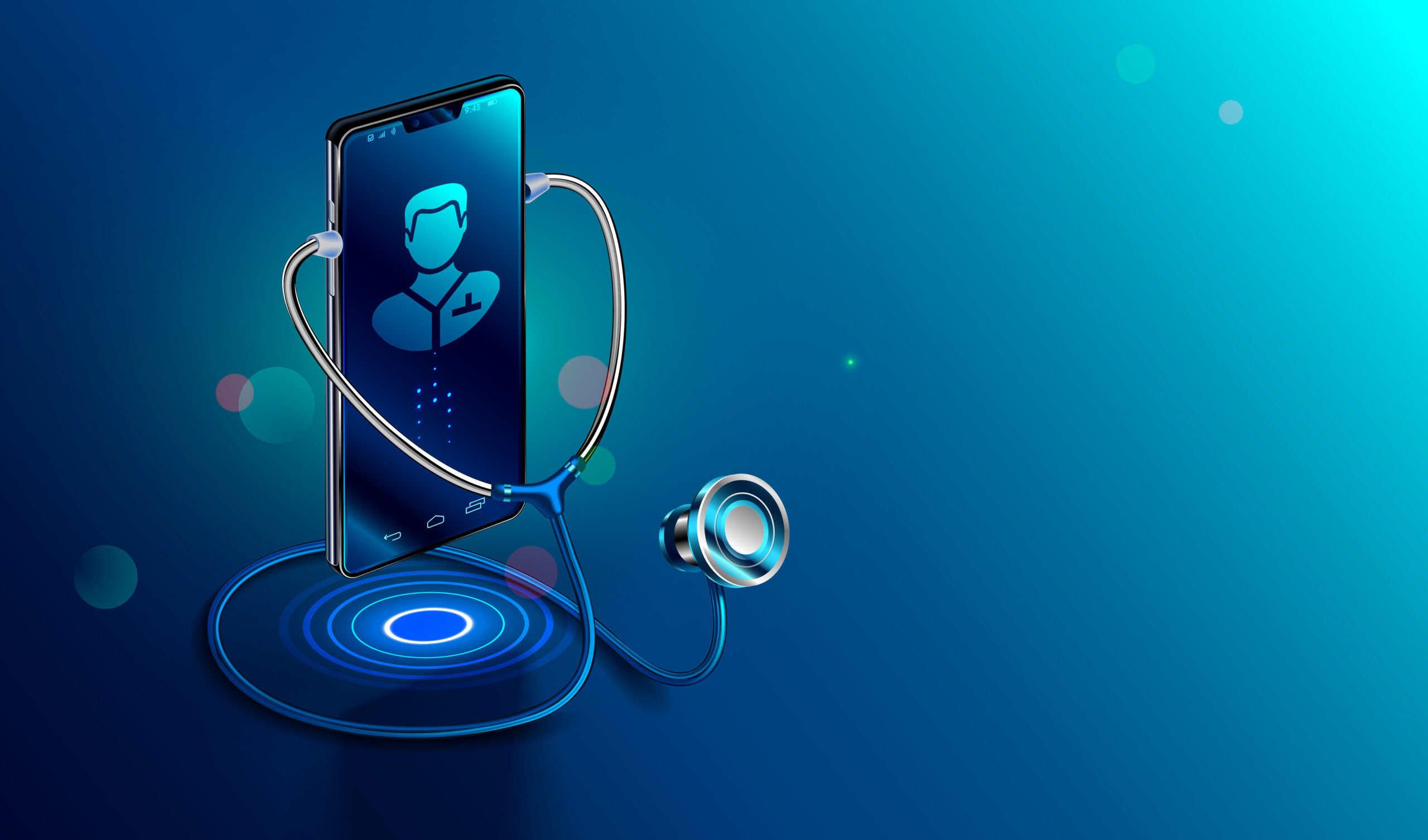Healthcare app development is a highly competitive industry, especially with the rise of pandemics and other healthcare crises. Face-to-face medical advice isn’t always possible for every patient, causing more consumers and businesses to engage with telehealth and other digital methods for looking after their health and well-being.
As we’ll see below, the market for online and mobile healthcare apps is becoming even more crowded. So, how does a healthcare app development company approach creating an app that genuinely makes a difference? KMS presents its guide to healthcare app development and how to create a strategy for success and a user-friendly app that’s both practical and accessible.
How Many Healthcare Apps Are There?
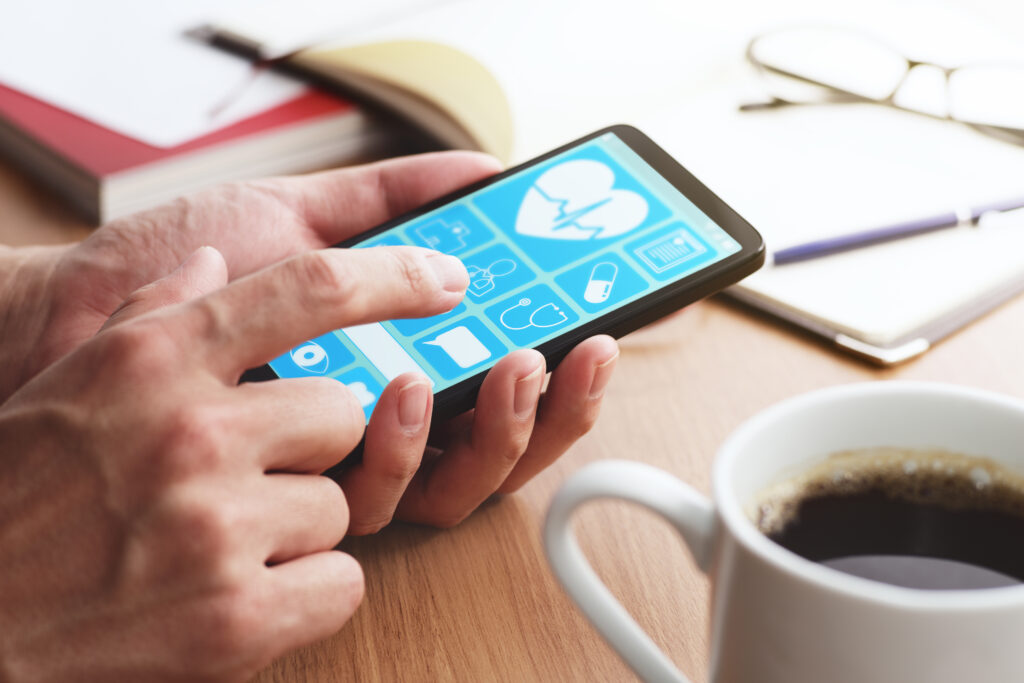
More than 90,000 new digital health apps were added to app stores in 2020—an average of more than 250 new apps daily.
The services provided by digital health apps vary widely. Some provide a platform for services such as virtual doctor appointments for connecting doctors and patients. Others support medical applications for chronic disease management. Plus, many consumer health apps help people manage their own well-being by, for example, tracking daily steps and accessing exercise and nutrition programs.
Globally, over 350,000 health apps are available from various app stores across different mobile devices. However, downloads and the corresponding use of apps are heavily skewed. Only 110 of these health-related apps are downloaded in significant numbers, but those account for almost half of all app downloads – downloaded more than 10 million times.
What Is Trending in Healthcare App Development?
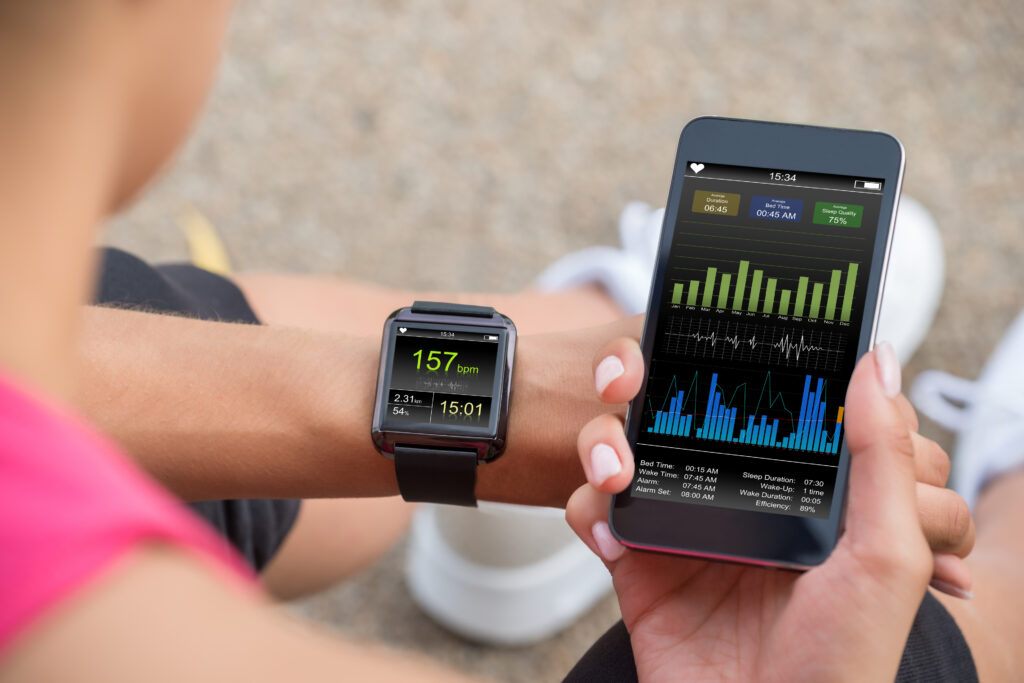
The global mHealth (mobile health) app market is expected to reach up to US$102.35 billion by 2023. The increased adoption of smartphones and other mobile devices, such as tablets, and the continued heavy investment into the digital health market are two key driving factors fueling growth of healthcare app development.
The recent pandemic also highlighted a greater need for improved health and well-being for both individual consumers and businesses who want a healthy, happy workforce. With labor shortages increasing, healthcare apps that can encourage employees to be proactive about looking after their health may be essential for many businesses.
Approximately 85% of health apps in the market today are for wellness, designed to be used primarily by the consumer. The remaining 15% are medical in nature, designed to be used by physicians.
What Are the Types of Healthcare Apps?
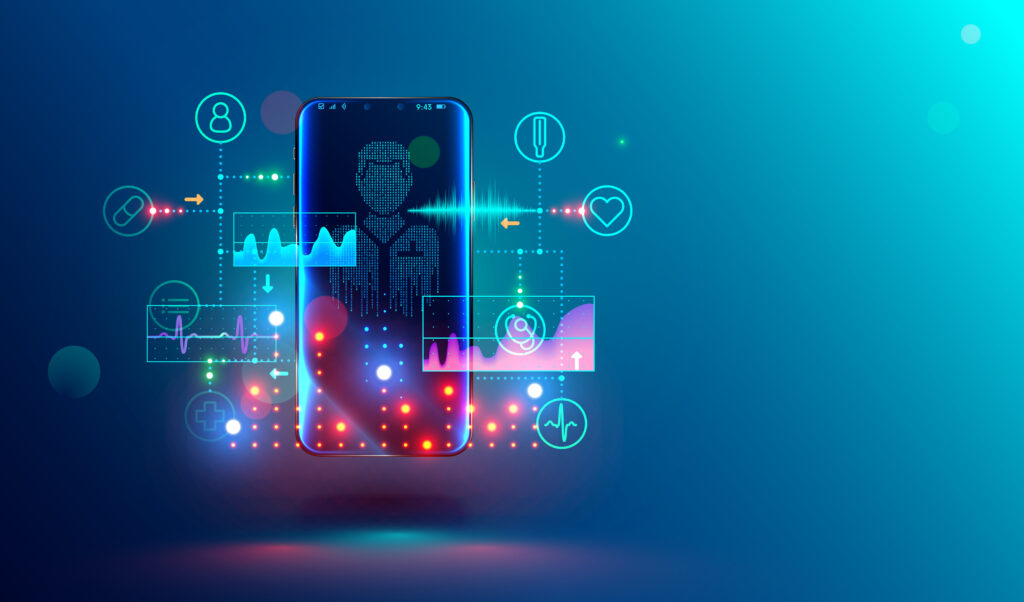
Keeping your finger on the pulse of what’s currently available can help you find a gap in the market and create a meaningful solution for your users. Emerging technologies and transformations in the ways people connect mean there are so many more opportunities to create something that can stand out in a crowded field. Here is a selection of the types of apps currently available for both consumers and medical professionals.
Healthcare App Development for consumers
More than ever, consumers want to control their health and well-being. They may hope to prevent accidents and injury or cut out costly medical bills caused by preventable conditions. Apps help consumers record their own health data, log fitness achievements, and monitor weight and other metrics that they can either keep private or share with medical professionals.
Different types of consumer healthcare apps include:
- Education & Prevention
- Scheduling & Reminders
- Patient Engagement & Support
- Chronic Disease Management
- Condition Education & Management
- Telehealth & Telemedicine
- Prescription Filling & Adherence
- Health Services Directory
- Self-Monitoring
- Symptom Checkers
- Rehabilitation Programs
- Lifestyle & Wellness
- Mental Health
- Fitness & Dieting
- Women’s Health
Healthcare App Development for Professionals
Clinicians, nurses, lab techs, pharmacists, home health caregivers, community care providers, support staff, and many more medical professionals use mHealth apps for various reasons.
The desired outcome is usually increased efficiencies, streamlined communications or processes, and improved quality of care for patients.
Prime examples of types of professional healthcare applications include:
- Medical Reference & Database
- Drug Reference
- Disease Diagnosis
- Medical Calculators
- Clinical Communication
- Hospital Information Systems (i.e., health records)
- Medical Education & Teaching
- Telehealth
- Patient Health Tracking
- Remote Patient Monitoring
- Appointments & Clinical Assistance
- Managing Clinical & Financial Records
- Professional Networking
Step for a Healthcare App Development
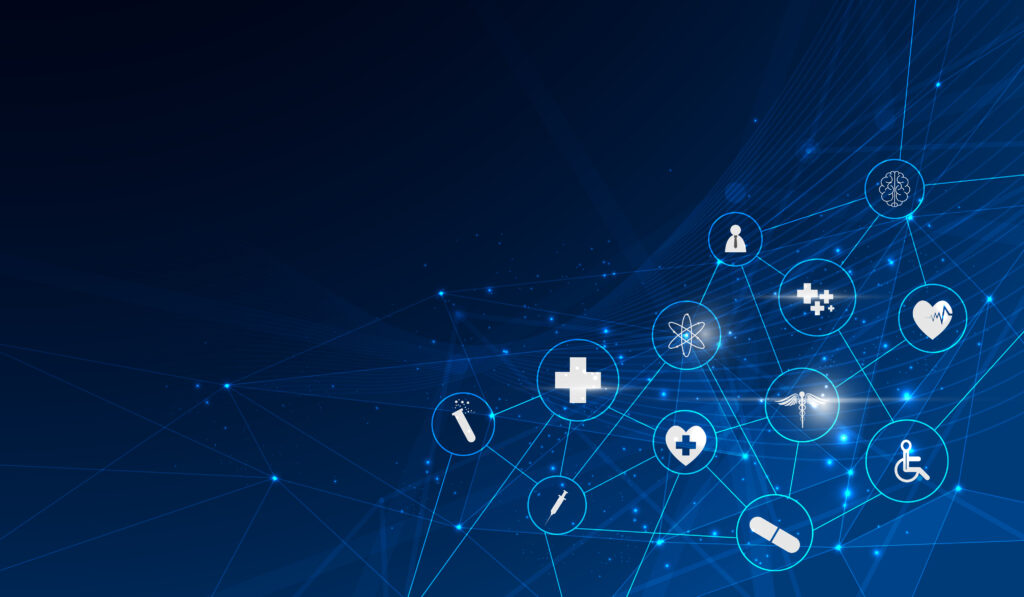
Like most types of custom software development, healthcare app development requires a consistent approach and a heavily people-focused strategy. This applies from the people you hope to help with your healthcare or fitness app to the team you have working on your digital and/or mobile application.
Identify a problem that still needs solving, and from that, determine your target audience
Healthcare app development must consider a wide demographic of end-users. Start by researching what problem exists that you are capable of solving and that you want to solve. This approach will help you decide on a solution-based idea that you can remain focused on and passionate about.
All apps need to be user-driven. This is particularly important for the healthcare industry, which requires comprehensive solutions to real-world problems.
Market research
Tools like SoGoSurvey, Qualaroo, and Google Forms are ideal for helping you understand your target audience. An MVP (minimum viable product) is a great tool for collating data on the reaction of your potential end users. Use this feedback to adjust the direction of your development efforts.
An MVP also helps you to measure the market dynamics for your healthcare app development idea and the potential profitability, and gain comparisons to other products within the same niche of the health industry.
Use tools like Indeemo Healthcare MarketResearch and Living facts to conduct thorough market research based on statistical information covering a range of demographics.
Deploy an effective team of developers
One option is to build a dedicated team for your healthcare app development project. The vetting process for this will be time and resource-consuming. However, choosing this option gives you better control over the project development process.
An alternative to the costly hire of an entire in-house development team is to outsource expert developers from a healthcare software development company. The advantages of this approach include the following:
- Working with a skilled software development partner
- One-time onboarding rather than the continuous hassle of vetting individual developers
- More effective and streamlined development procedures
To find out the best-fit, you can simply utilize a dependable tool to generate the required costs for each staffing mode options and decide which one is most suitable for your budget and capacity.

Plan a healthcare app development strategy
Various software development methodologies may guide the processes relating to specific project development requirements in the software industry. There are also different frameworks to help development teams implement these methodologies.
Agile, for example, is used extensively in the software industry. Agile encourages the rapid development of software products in increments and focuses on flexibility and speed.
Different frameworks like Scrum, Kanban, and development practices like pair programming and extreme programming can help when implementing the Agile methodology for your app development process.
Design and develop an MVP
The next step is to use your market research data and design a simple app with the essential features. A pared-down version of the mobile app is called a minimum viable product (MVP) which we mentioned above.
Use your MVP to gather insights and reactions from users, and use those to hone your finished product. Consider launching an MVP early in the production process of your app. The sooner you deploy an MVP, the sooner you can get development-critical feedback that could entirely change your healthcare app development direction. Learning a week before launch that your interface is not user-friendly, for example, could cause your healthcare app to fail or prompt poor reviews that could impact your entire brand’s reputation.
Ensure your MVP focuses on the “V” – the viable part of your mHealth app. Test users need to be able to access the primary feature or benefit that will ultimately be the unique selling point for your new application.
What Are Some Next-Gen Features for Healthcare App Development?
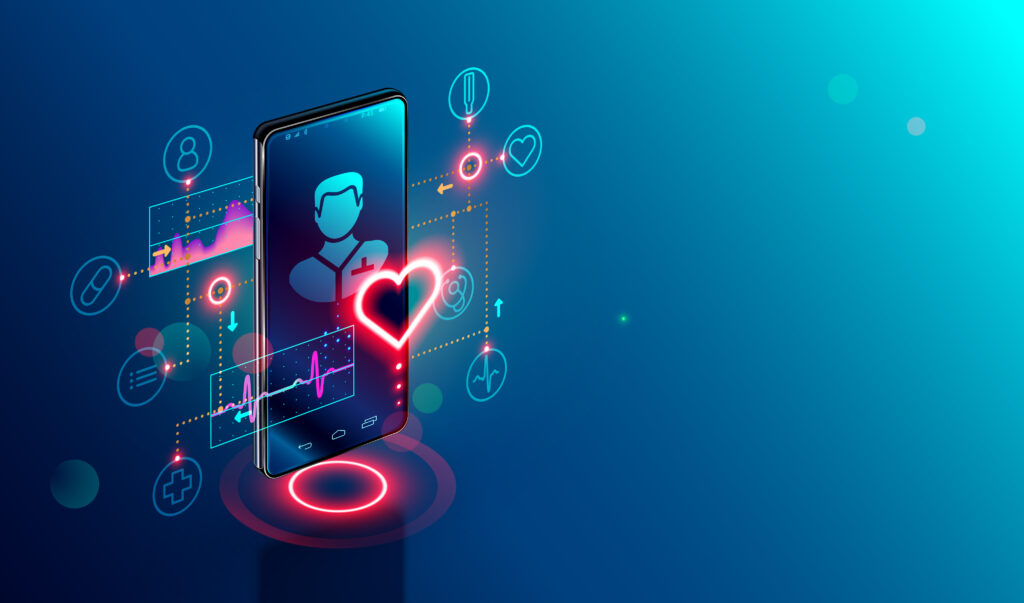
From artificial intelligence (AI) and machine learning (ML) to the same technology that powers cryptocurrency, many emerging technologies can improve and even drive the progress of mHealth applications. Here are a few examples of next-generation technology that are promising for your healthcare app development.
AI and ML
- Intelligent chatbots learn about the patient’s condition during a conversation, plus they can provide a more user-centric experience by learning about individual patients and their needs.
- Medical imagery analysis and pattern identification for potentially faster and more accurate diagnoses.
- Symptom tracking and analysis of huge sets of data to provide new information on existing conditions or even links between conditions that hadn’t been considered before.
- Real-time posture detection and correction advice.
- ML algorithms can foster the discovery and development of new drugs, plus they can discover patterns in side effects among varying demographics of patients.
- Preventative medicine and treatment options.
- Patient flow optimization.
- Better management of healthcare financials.
- Improved resource management for healthcare settings.
- The ability to connect healthcare information from various sources, for example, a fitness app combined with information from a physiotherapist, could create better outcomes for patients with musculoskeletal issues.
Blockchain
- Integration with multiple EHR systems.
- Medicine tracking in supply chains, including the detailed monitoring of temperature and other metrics associated with the successful delivery of medicines and vaccines.
- Decentralized patient portals where each patient owns and controls access to their data for improved data security.
- Additional security and access control for medical devices.
IoT, also known as IoMT (Internet of Medical Things) for healthcare applications
- Smart medical appliances in both hospital and home settings.
- Community healthcare or devices that track healthcare metrics, such as the number of ambulances or paramedics deployed within a specific area
- Wearables supporting advanced sensors like ECG and EDA, plus the ability to take readings such as blood pressure or blood glucose levels and share that data with medical professionals
- Traceable medicine – wearable patches that check if a patient has taken their medication and can potentially connect to either medical professionals or caregivers.
What Are Some Notable Healthcare App Development Projects?

Healthcare app developers can gain inspiration from some of the biggest names in digital and mobile healthcare applications available right now.
WebMD
WebMD is one of the leading healthcare apps across the globe. It provides convenient healthcare information, offers a symptom checker, provides medical reminders, and shows a list of doctors across a particular region.
Users can also learn about certain prescriptions, drug effects, research treatments, and diagnoses as well. Today, more and more people are using WebMD to get useful information about different medical needs.
Apple Health
The most prominent healthcare product by Apple is its health app. It is a complete tracker for measuring all the activities and health of the user. Apple Health monitors sleep, food, activity, heart rate (when connected with IoT devices), and other aspects of well-being that contribute to a clear assessment of the user’s health data.
The patient can connect this mHealth data with other applications to collate a good range of health metrics. Apple Health is one of the most popular healthcare applications many patients use to better understand their overall well-being.
Medici
Medici enables users to connect with doctors in a fraction of the time and at a minimal cost. After connecting with doctors, patients can explain their illnesses, plus the functionality to send pictures and details of symptoms. Once that is done, the doctor will send any required prescription directly to the patient’s pharmacy to get the right medicines and a prescription plan.
It is a HIPPA-compliant application that reduces the hassle of setting up appointments with doctors and aids those who may not be able to access a doctor’s office with ease.
Why Do Some Healthcare App Development Schemes Fail?

A healthcare app development company may come across challenges they had not considered, which is why it’s vital to understand why online and mobile healthcare apps fail.
Poor user experience & accessibility considerations
When creating a satisfactory mobile healthcare app, the users’ experience is everything. This means ensuring that you have developed an intuitive interface that guides users through their healthcare app journey.
Healthcare app development companies must also consider accessibility.
Will the app still function if someone is deaf or blind? Does the app communicate in clear and straightforward language, which is essential for ensuring neurodiverse people can get the most from your app? Are there possible modifications for those with limited mobility? Can it record patient data in line with current regulations and aid those with memory problems, such as older users?
Consider testing your well-being or health app with a diverse range of potential users across a variety of mobile devices to ensure it’s accessible to as many people as possible.
The app does not solve users’ problems
Apps that don’t actually solve problems aren’t going to make a significant difference in the lives of the people who use them. They won’t get talked about, and your user base won’t grow, making your app a poor investment.
There are plenty of fitness apps that help users calorie count or track their food and water intake. There are also plenty of telehealth options for connecting doctors and patients. What will your app do that’s different and sets it apart from the competition?
For well-being and fitness apps, in particular, it’s critical to include aspects that encourage users to change their habits in a positive and rewarding way.
Apps that empower businesses to provide healthcare services for their employees should consider the nature of the industry. Manual laborers may need different services than lab technicians. Employing experts in neuroscience or psychology can help with this. So many aspects contribute to users’ healthcare; it’s critical to ensure your healthcare application solves problems that actually exist for your users.
Insufficient research or industry expertise
Launching into healthcare app development without proper research means you’re creating an app that may not employ the expertise needed to help anyone. You need to understand your target audience, their problems, and how this application will help.
Engage the support or collaboration of those working in the medical field your app is designed for. Talk to potential users and find out exactly what they would need from the type of app you’re trying to create. Take advantage of healthcare app development services from industry experts who can guide your development choices in the right direction.
Globally, the mHealth market was valued at an astonishing $38.2 billion in 2021 and is expected to grow by nearly 12% annually until at least 2030. Make sure your healthcare application is fit for purpose and solving the right problems by fostering the correct approach and avoiding the pitfalls of inaccessibility and a lack of research.

Need help? KMS can provide that support with our dedicated team of experienced developers.

